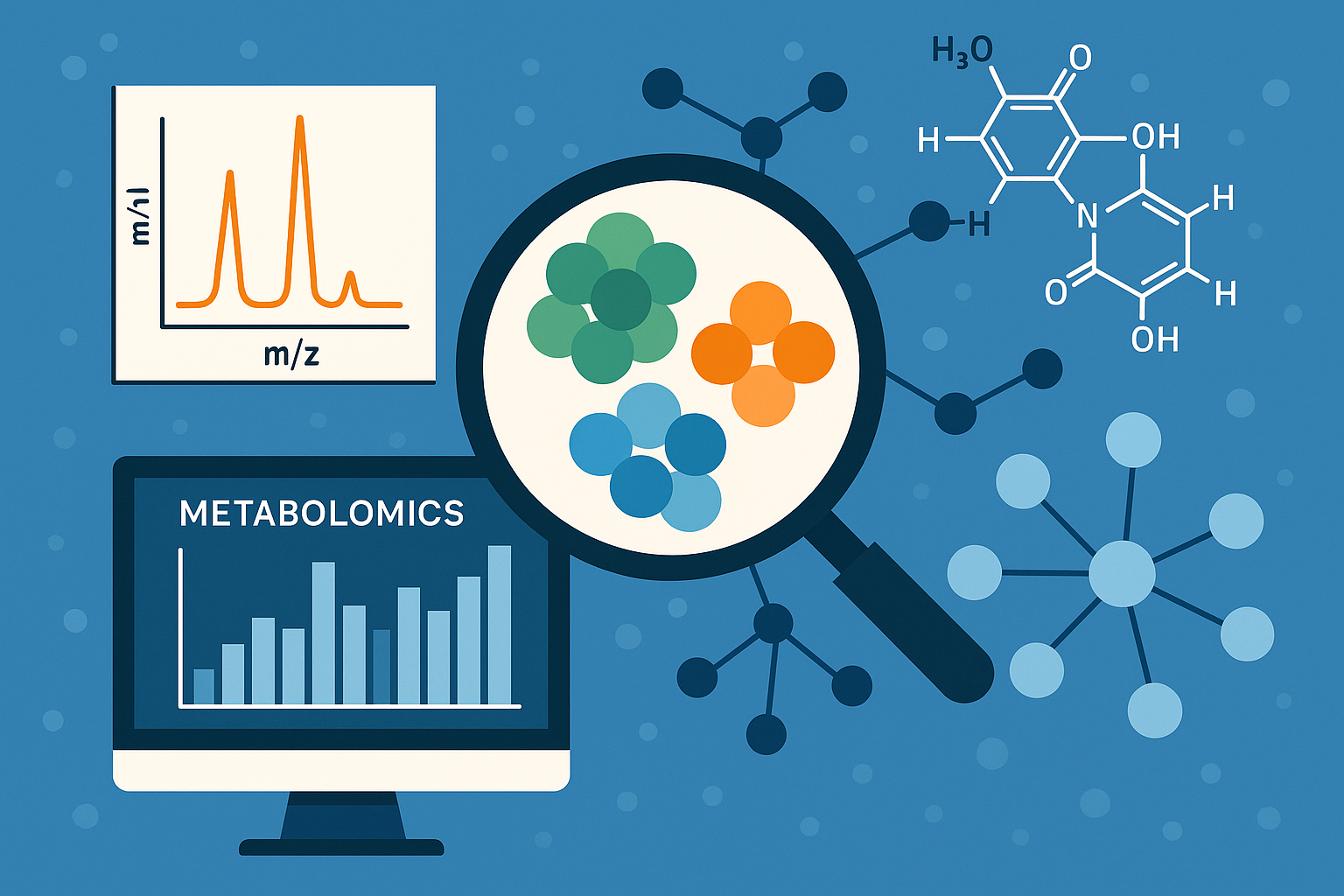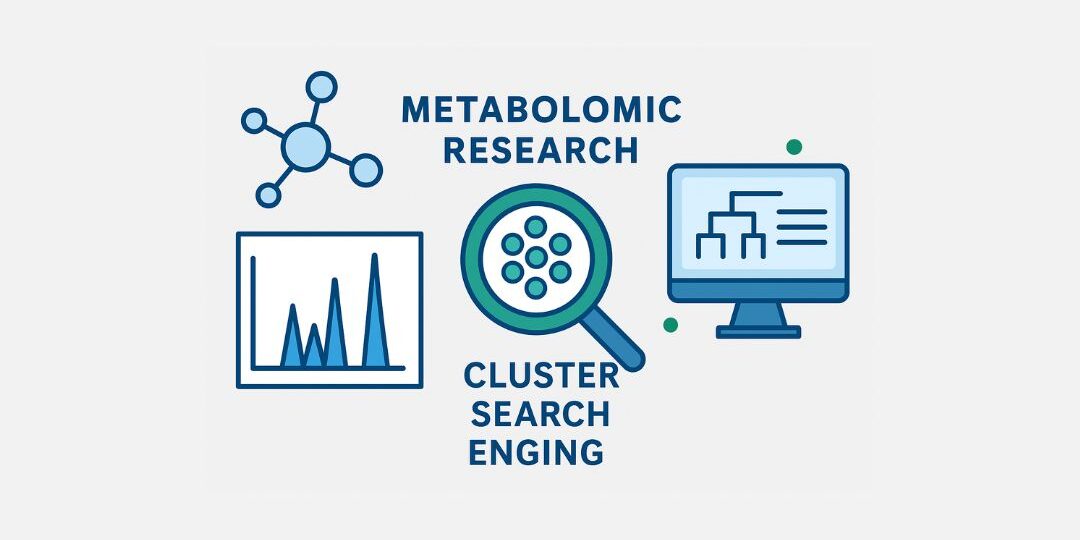In the world of metabolomics, data complexity is one of the biggest challenges researchers face. Modern experiments generate enormous volumes of spectral data, often containing thousands of features that must be accurately identified, clustered, and interpreted. This is where a cluster search engine becomes indispensable. By enabling efficient data clustering, pattern recognition, and annotation, a cluster search engine empowers metabolomic scientists to streamline analysis and uncover meaningful biological insights faster and with greater accuracy.
At IROA Technologies, we understand that precision in metabolomic research depends on robust data processing tools that can handle variability, eliminate redundancy, and ensure reproducibility across analytical runs. Let’s explore how a cluster search engine serves as a cornerstone for high-quality metabolomic research.
Understanding the Role of a Cluster Search Engine
A cluster search engine is designed to analyze and group metabolomic data based on similarities in molecular features such as retention time, mass-to-charge ratio (m/z), and isotopic patterns. Instead of manually sorting through massive data tables, researchers can use automated clustering algorithms to detect recurring compounds, correct for noise, and consolidate redundant signals.
This process not only reduces analytical complexity but also enhances the clarity of downstream interpretations. In short, the cluster search engine transforms raw spectral data into structured biological knowledge.
1. Simplifying Complex Data
Metabolomic datasets, especially those derived from mass spectrometry or NMR, can be massive and multidimensional. Without proper organization, these datasets can become overwhelming. A cluster search engine helps by:
-
Grouping related signals: It identifies spectra or peaks that belong to the same compound, even if they appear multiple times across replicates.
-
Reducing data noise: It filters out irrelevant or redundant data points, ensuring clean, interpretable results.
-
Accelerating identification: Automated clustering allows for faster detection of metabolites and more efficient integration with databases.
This structured approach transforms raw analytical data into a manageable and reliable dataset for biological interpretation.
2. Improving Accuracy and Reproducibility
Reproducibility is one of the pillars of reliable metabolomic research. Variability in sample preparation, instrument conditions, or data processing can easily distort results. A cluster search engine mitigates these risks by applying consistent clustering criteria across all datasets.
By detecting and aligning shared spectral features, the engine minimizes false positives and ensures that comparisons between samples are biologically meaningful. This enhances the reproducibility of findings — a key requirement in quantitative metabolomics and biomarker discovery.
3. Enhancing Data Integration Across Platforms
In metabolomic workflows, data often come from multiple analytical instruments or experimental conditions. Integrating these datasets can be difficult without a unified framework. A cluster search engine provides that framework by enabling cross-platform data alignment.
Researchers can combine datasets from GC-MS, LC-MS, and other platforms to identify overlapping or unique metabolites across conditions. This integrated view allows for a more comprehensive understanding of metabolic pathways and biological mechanisms.
4. Supporting Advanced Computational Analysis
Modern metabolomics doesn’t stop at data acquisition — it thrives on computational modeling, machine learning, and bioinformatics integration. The cluster search engine provides the foundation for these advanced analyses by organizing data into meaningful groups.
Once data clusters are formed, they can be fed into machine learning models to predict unknown metabolites, detect biomarkers, or explore metabolic shifts under various physiological conditions. The reliability of these insights depends directly on the accuracy of clustering.
5. Enabling Automated Annotation and Database Matching
 Annotation — the process of matching detected metabolites to known compounds — is one of the most time-consuming steps in metabolomic analysis. A cluster search engine streamlines this process by:
Annotation — the process of matching detected metabolites to known compounds — is one of the most time-consuming steps in metabolomic analysis. A cluster search engine streamlines this process by:
-
Matching clusters to existing spectral libraries.
-
Automating comparison with in-house or public databases.
-
Flagging unknown clusters for further investigation.
This not only saves time but also enhances the depth of data interpretation. Researchers can focus on biological significance instead of spending hours cleaning and matching raw data.
6. Boosting Biological Insight and Discovery
Ultimately, the goal of metabolomic research is to understand the biochemical processes that define health, disease, and environmental interactions. By simplifying and structuring data, a cluster search engine accelerates discovery.
Researchers can easily identify differential metabolites, quantify changes, and visualize pathway-level variations — all powered by accurate clustering. This clarity drives better hypothesis generation and more robust scientific conclusions.
7. Integration with IROA Technologies’ Tools
At IROA Technologies, we’ve developed advanced metabolomic solutions that integrate seamlessly with clustering and search workflows. Our isotopic labeling technologies, metabolite libraries, and analytical tools complement the precision of cluster-based analysis.
By combining high-quality internal standards with robust clustering algorithms, scientists can achieve unparalleled accuracy and reproducibility in metabolomic research.
8. Real-World Applications
A cluster search engine plays a vital role in several metabolomic domains:
-
Clinical Research: Identifying disease-specific metabolic signatures.
-
Nutritional Science: Evaluating metabolite changes in response to diet or supplements.
-
Environmental Monitoring: Tracking biochemical responses to pollutants.
-
Pharmaceutical Development: Discovering drug metabolites and toxicological markers.
Each of these applications relies on accurate clustering to translate complex data into actionable biological knowledge.
9. The Future of Metabolomic Data Management
As metabolomics continues to evolve, the demand for scalable, automated data analysis tools will only increase. Future cluster search engines will likely incorporate artificial intelligence and deep learning to further enhance pattern recognition and metabolite identification.
These developments will allow for real-time data interpretation and integration with other “omics” platforms — genomics, transcriptomics, and proteomics — ushering in a new era of precision biology.
External Link
To explore how clustering and data standardization improve metabolomic research outcomes, visit Nature Metabolomics Overview.
FAQs
1. What is a cluster search engine in metabolomics?
A cluster search engine is a computational tool used to group similar spectral features or metabolites based on shared characteristics like mass, retention time, and isotope patterns. It simplifies and structures large datasets for accurate analysis.
2. How does a cluster search engine improve research accuracy?
It reduces redundancy, corrects for variability, and ensures that metabolites are consistently identified across samples leading to more accurate and reproducible results.
3. Is a cluster search engine compatible with different analytical platforms?
Yes. Most cluster search engines can integrate data from various sources such as LC-MS, GC-MS, and NMR, enabling cross-platform comparisons and comprehensive analysis.
4. Why is clustering important in metabolomics?
Clustering helps organize complex datasets, removes noise, and allows researchers to focus on biologically relevant signals, which is crucial for biomarker discovery and pathway analysis.
5. How does IROA Technologies support cluster-based metabolomic research?
IROA Technologies offers isotopic labeling standards, reference metabolite libraries, and data analysis tools that complement clustering workflows, ensuring accuracy and reproducibility in metabolomic experiments.
Conclusion
A cluster search engine is far more than a convenience — it’s a scientific necessity for anyone seeking to conduct accurate, reproducible, and insightful metabolomic research. By structuring data intelligently and integrating it across instruments and experiments, clustering technology enables scientists to focus on what truly matters: uncovering the hidden biochemical patterns that define life itself.
At IROA Technologies, we continue to empower researchers with advanced tools and standards that drive the future of metabolomics.







